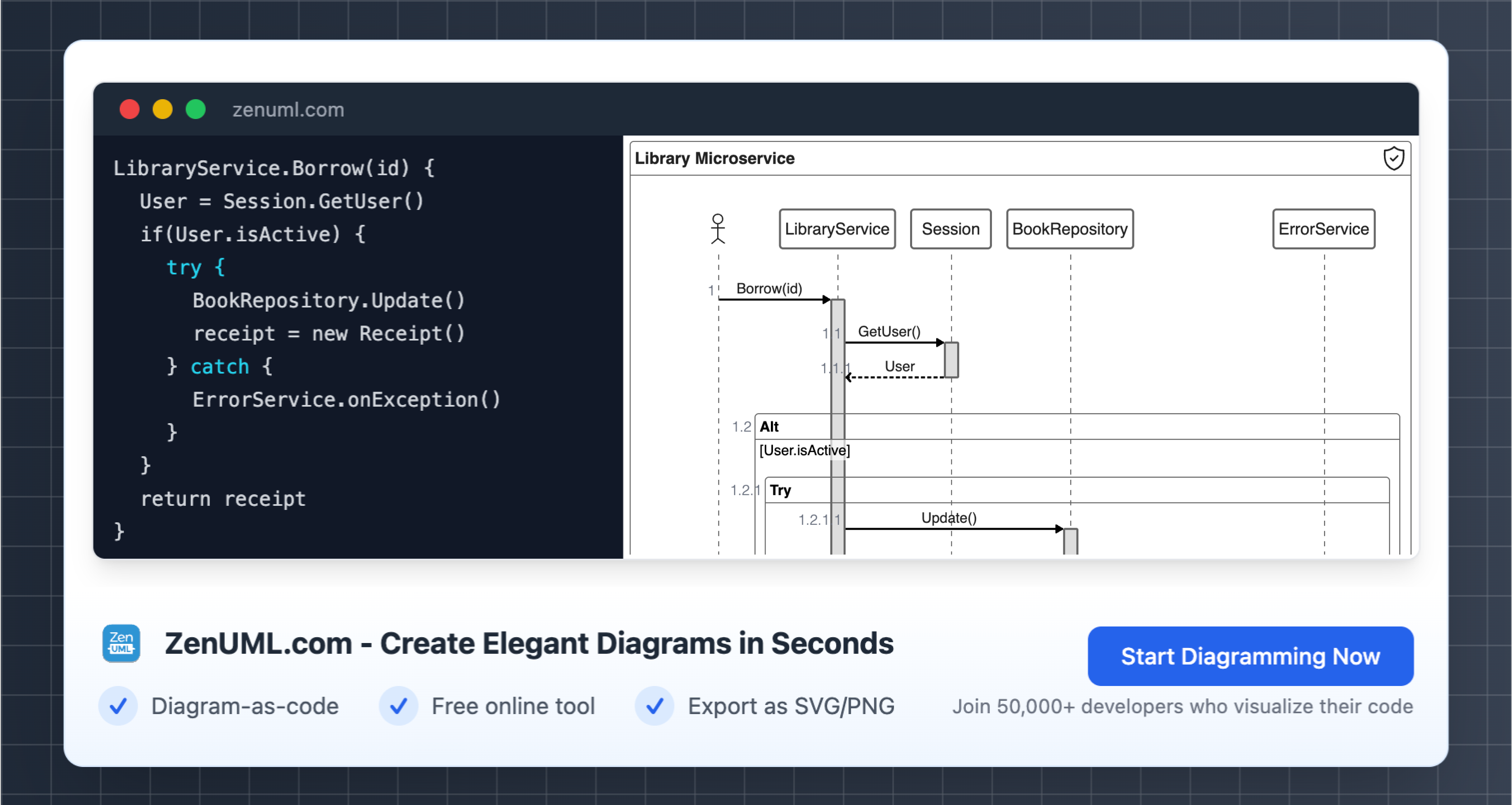Try ZenUML now!
Introduction
Unified Modeling Language (UML) is a standardized modeling language used in software engineering and systems design. It provides a common vocabulary and notation set that allows developers, designers, and business analysts to visualize, specify, construct, and document a software system.
Within the UML suite of diagrams, sequence diagrams are particularly useful for modeling object interactions over time. They capture the order in which messages are passed between objects in a system. This chronological perspective makes sequence diagrams great for visualizing logic, especially complex workflows and processes that involve several objects.
In this article, we will cover the basic concepts and definitions around UML sequence diagrams. We will explore what sequence diagrams are, what they are used for, and their key components. Our goal is to provide a high-level overview of sequence diagrams for those new to UML. We will not go in-depth into how to actually create sequence diagrams or use specialized sequence diagram software. By the end, readers should understand the purpose and utility of sequence diagrams in the software design process.

